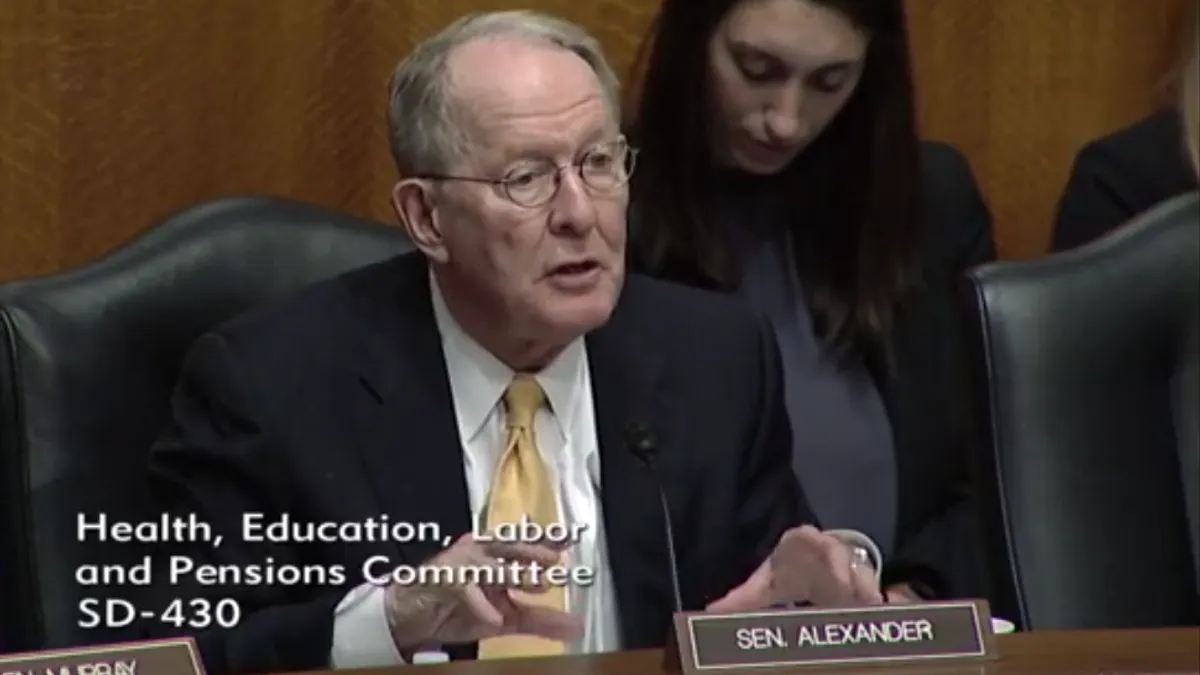Dive Brief:
- In a Senate Health, Education, Labor and Pensions committee hearing Wednesday, Sen. Lamar Alexander (R-Tennessee), who chairs the committee, outlined a few of the challenges schools across the country are facing during the coronavirus pandemic, including:
- Limited space in public schools for social distancing.
- Rigid rules for district administrators as a result of state, local and union rules and regulations that make changes to academics, class size and schedules difficult.
- Creating a mask-wearing and rigorous hygiene culture among younger children.
- Systematic testing of children.
- Sen. Patty Murray (D-Washington) pointed to costs districts are facing as a barrier that needs to be addressed. "Schools and school districts are now facing some of the biggest cuts to state and local revenue that we have seen in a long time while facing increased costs as a result of this pandemic," she said. "We need a massive investment in our schools right now.”
- There seemed to be agreement across parties that reopening plans should address learning loss and the mental health needs of the highest-risk students, for whom the pandemic is projected to widen achievement gaps. Denver Public Schools Superintendent Susana Cordova added that in her district's three draft options, at least 40% of students' time will be spent learning in person.
Dive Insight:
“Schools should plan for COVID to last at least a year," Alexander said, adding he is hopeful for a vaccine to be available by spring. "It’ll likely be the fall of 2021, though, before we begin to approach normal.”
In Tennessee, Education Commissioner Penny Schwinn said the state department of education will work with agency partners to provide personal protective equipment and other resources, like thermometers, free of charge for all districts. She said the state continues to fully fund its education budget.
But Nebraska Commissioner of Education Matt Blomstedt warned of upcoming cuts for school districts. "This is a perfect storm as we face increased need and decreased resources," he said, adding PK-12 cuts could exceed 20% in the state.
Recent analyses by AASA, The School Superintendents Association, and the American Federation of Teachers have suggested an average district would have to spend an additional $1.2 million to $1.75 million to reopen schools safely in the fall.
And those expenses are in addition to funds needed to make up for revenue losses and address cuts that have already cost local education systems 750,000 jobs, or twice the jobs lost in the Great Recession, AFT said in its cost analysis press release Wednesday.
Former U.S. Secretary of Education John King Jr. pushed in the Senate hearing for Congress to increase federal education funding to make up for losses in local revenue, echoing educators' calls across the country.
“Without Congressional action, there will be no conceivable way to avoid layoffs and hiring freezes, disproportionately impacting educators and staff in high-poverty schools," he said.







 Dive Awards
Dive Awards







